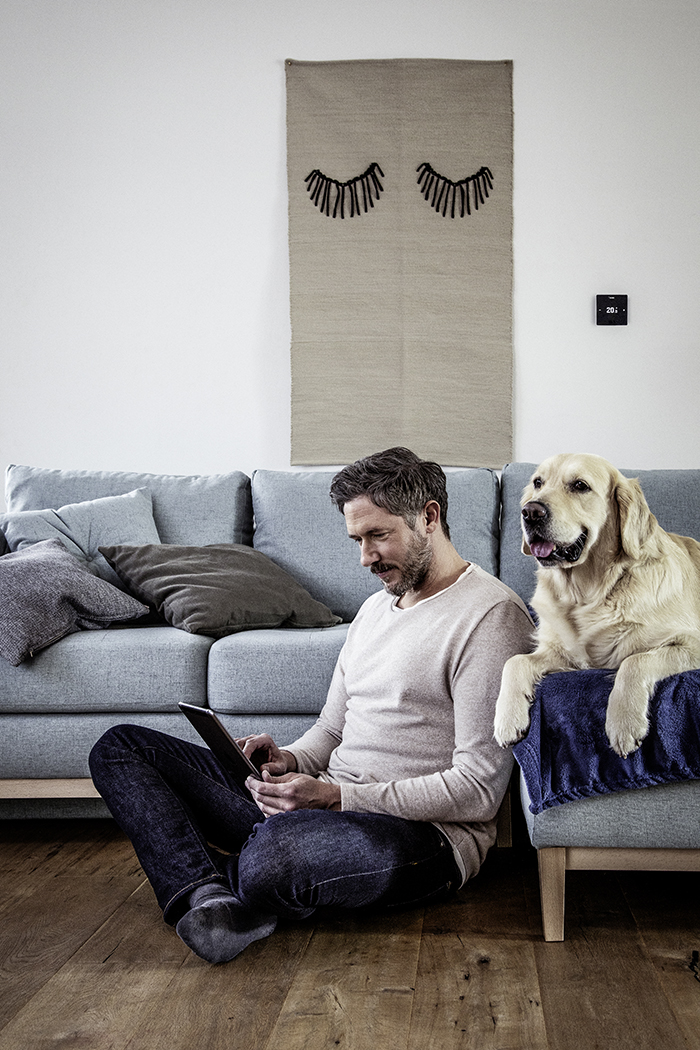 The smart controls market is booming and as it grows, so too does the expectation that smart technology will be integrated into our building stock. Delivering better efficiency and lowering long-term costs for owners and occupants, smart controls are now a priority when specifying a building. With this in mind, Franz Huelle, Head of Technical at REHAU Building Solutions, explores developers, contractors and end users’ current needs, and future expectations.
The smart controls market is booming and as it grows, so too does the expectation that smart technology will be integrated into our building stock. Delivering better efficiency and lowering long-term costs for owners and occupants, smart controls are now a priority when specifying a building. With this in mind, Franz Huelle, Head of Technical at REHAU Building Solutions, explores developers, contractors and end users’ current needs, and future expectations.
Previously worth $43.4 billion in 2017, some experts predict the smart controls market will be worth as much as $158 billion in the next four years. Closer to home, the UK market was worth £900m in 2017 and is one of the fastest growing smart technology markets in the world. Clearly demand for the integration of smart controls is growing and, with the introduction of 5G and AI, this will only increase.
 Home automation experts Smarthome.com suggest that consumers could save up to a third on their energy bills thanks to the efficiency afforded by smart controls. With these kinds of end user cost savings, there is pressure on developers, specifiers and contractors to implement smart technology into both their residential and commercial developments. In particular, as technology in HVAC applications becomes more popular with consumers, they will need to implement smart controls in conjunction with heating systems.
Home automation experts Smarthome.com suggest that consumers could save up to a third on their energy bills thanks to the efficiency afforded by smart controls. With these kinds of end user cost savings, there is pressure on developers, specifiers and contractors to implement smart technology into both their residential and commercial developments. In particular, as technology in HVAC applications becomes more popular with consumers, they will need to implement smart controls in conjunction with heating systems.

En users want ‘smarter’ heating
According to a 2017 report by the European Commission’s Digital Transformation Monitor into ‘Smart Home’ technologies, consumers now expect enhanced levels of control over heating to help reduce their energy consumption and bills. As people spend more time at home, particularly with flexible and remote working rising, the expectation that heating can be just as flexible as a homeowner’s life is fast becoming the norm.
This too goes for commercial end users, who desire maximum efficiency and reduced premises running costs. The growing demand for flexible work schedules means buildings could have days of complete vacancy, or perhaps are now coworking spaces shared by multiple organisations. Heating systems must be able to keep up with these varied occupant demands.
Once synonymous with luxury developments, underfloor heating (UFH) is fast becoming the residential and commercial heating system of choice. Offering modular and flexible space heating, UFH with smart controls could be the efficient means developers and contractors require to meet exacting end user demands.
 High performance below the surface
High performance below the surface
With such differing requirements for residential and commercial end users, developers and contractors need flexible solutions. Whether for extending existing dwellings or multi-storey office buildings, it is increasingly crucial that heating systems can be scaled up depending on project size, while still delivering high levels of efficiency and space heating performance.
UFH smart controls such as the NEA Smart 2.0 from REHAU equip developers and contractors with the modularity and adaptability to meet the individual challenges posed by their project’s space heating requirements. Using internet data and information learned over time rom building efficiency performance metrics and occupant habits, smart control systems can efficiently heat a space exactly in line with its individual requirements.
Working from an internet-connected base station, the NEA Smart 2.0 controls underfloor heating zones through up to 60 individual room thermostats. These can be divided into up to five subgroups that can be programmed individually to fit the building’s needs. Room thermostats can be either hard wired into the building’s fabric or connected wirelessly to the base station, giving complete flexibility at point-of-installation and, crucially, later on in the building’s life, as the layout and function of different spaces changes.
To alleviate concerns around smart control installation, systems such as the NEA Smart 2.0 have been designed to be installed ‘out of the box’. It features a simple tool-free set-up, while an intuitive commissioning wizard is available for more complex systems to guide installers through process and system checks. Smart functionality also allows for intuitive remote servicing through the internet, with contractors able to access installed systems for servicing via a dedicated app.
With heating smart controls set to be even more commonplace in the future, systems such as these can reassure building professionals that their project will satisfy end user demands. As the challenge to ensure efficient and sustainable space heating continues, flexible and modular UFH smart control systems could be a solution that futureproofs developments long into the coming years.

